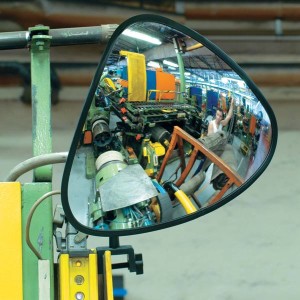Today we have been looking into the pressures of working in a busy warehouse and the effect this can have on warehouse safety. I think many would agree that when it comes to safety prevention of accidents is the key. However, it is often found that safety procedures are only implemented once an accident has occurred.
Firstly, we shall look at the hazards you may be faced with when working in a busy warehouse:
- The use of forklifts and other warehouse vehicles can be very dangerous and should always be operated with care.
- Slips and trips are common in warehouses but can be eliminated by keeping the warehouse clean, tidy and using anti-slip flooring.
- Falls account for the majority of workplace accidents, so extra care and safety precautions should be undertaken if employees are working above ground height.
- In a warehouse moving parts and falling objects are common and employees should always be alert to what’s going on in their surroundings.
Here are three of our top tips for warehouse safety…
Protect People: Plan Traffic Routes
In a busy warehouse where there is a high volume of warehouse traffic and pedestrian traffic; traffic routes should be clearly marked. Using safety barriers, floor marking paint and bollards can help segregate forklift trucks and general warehouse foot traffic. Once you have decided the safest traffic routes to use, they should then be kept clear and should be maintained. It is also worth while walking employees around the warehouse to show them the safest and most direct routes to take without putting themselves at risk.
Protect Your Warehouse from Damage
Whilst ensuring the safety of employees is a number one priority, there should also be precautions in place to protect your structural surroundings and any exposed gas or water pipe work. Impact protection barriers and columns with flexi buffers can be used to ensure minimal structural damage and minimal harm to employees.
Be Visual: Use Signage and Safety Mirrors 
When working in a busy warehouse good observation skills are is essential. Using the correct signage and safety mirrors around a warehouse can allow employees to know what’s going on in their surrounds effectively.
Last but by all means not least – Education, Education, Education.
It should be a high priority to keep up to date with staff training. Whether this is enrolling on the latest safety training, ensuring all forklift drivers have undertaken the appropriate warehouse vehicle training, or simply implementing safety procedures it should be done as a matter of urgency.